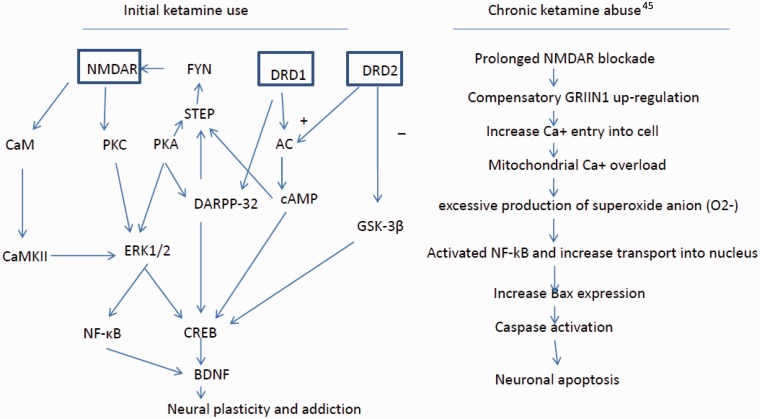Figure 2.
A proposed molecular mechanism describing initial ketamine use (left) and chronic abuse (right): initial ketamine use may involve altering two pathways: NMDA and dopamine receptors. Ketamine blocks NMDA receptor-dependent activation of NF-κB and CREB that promote synaptic plasticity via BDNF. However, ketamine also enhances dopamine function, via increased dopamine release and intracellular signaling, leading to activation of CREB. Increased CREB activation enhances BDNF transcription. In addition, ketamine enhances translation of BDNF mRNA, leading to increased neuroplasticity and addiction. Chronic ketamine exposure induces compensatory GRIN1 up-regulation that causes an influx of extracellular Ca2+ into the intracellular compartment. The overloaded Ca2+ infux produces superoxide anion that activates NF-κB, to promote Bax gene expression which is critical to active caspase, leading to apoptosis.45 (A color version of this figure is available in the online journal.)

